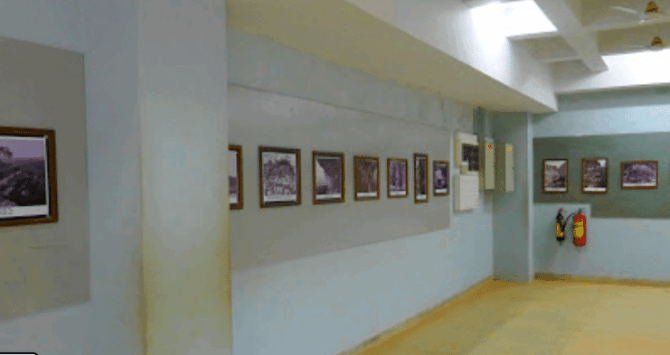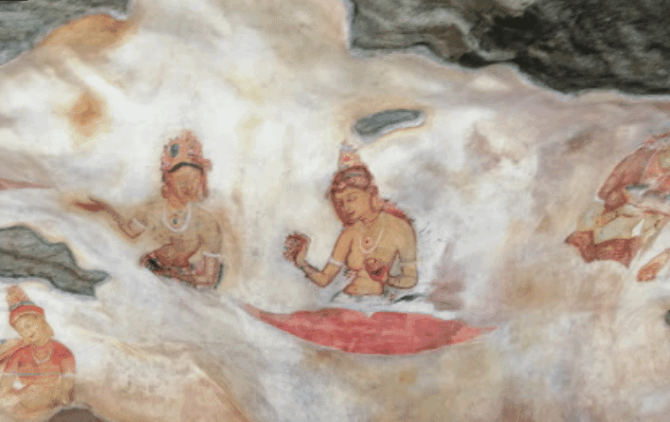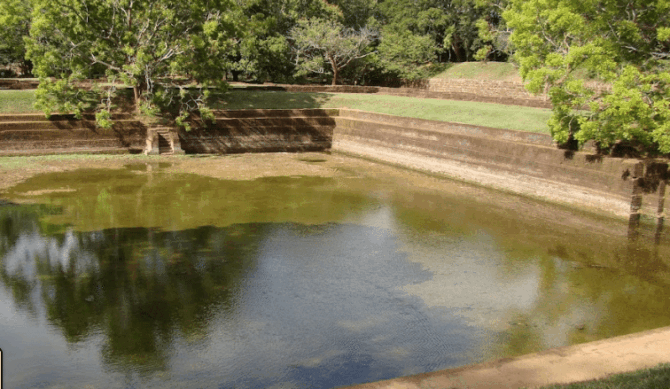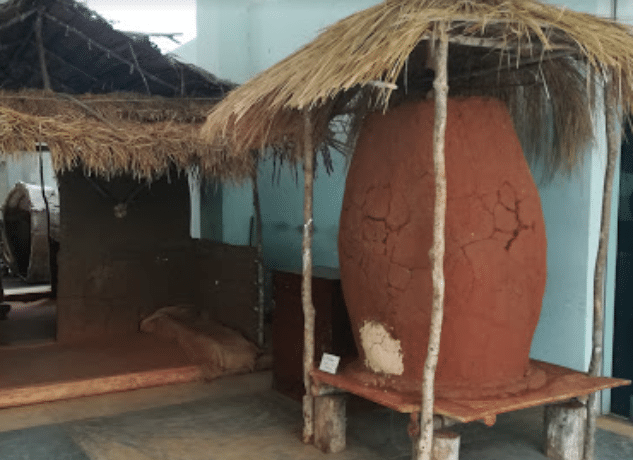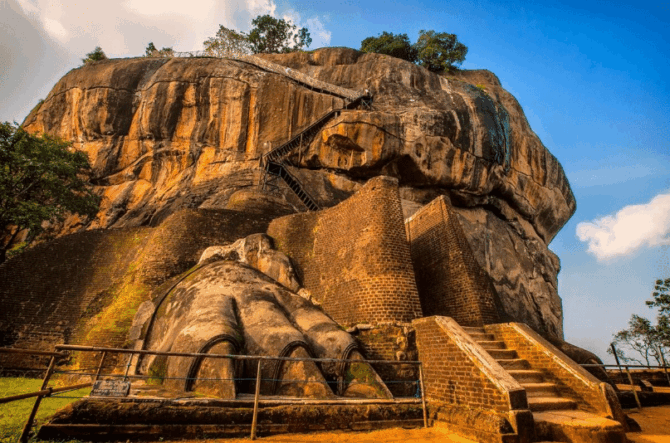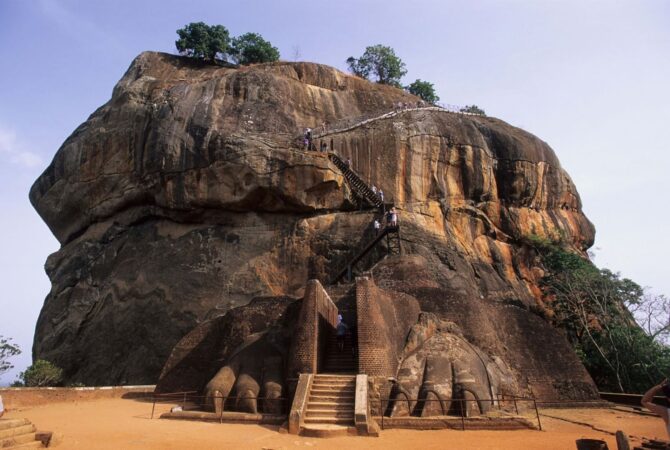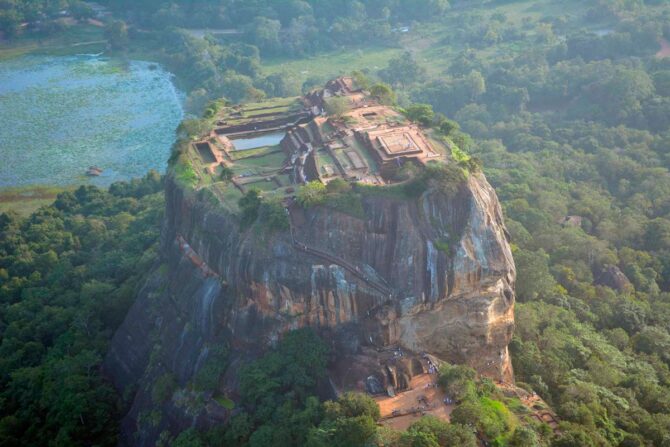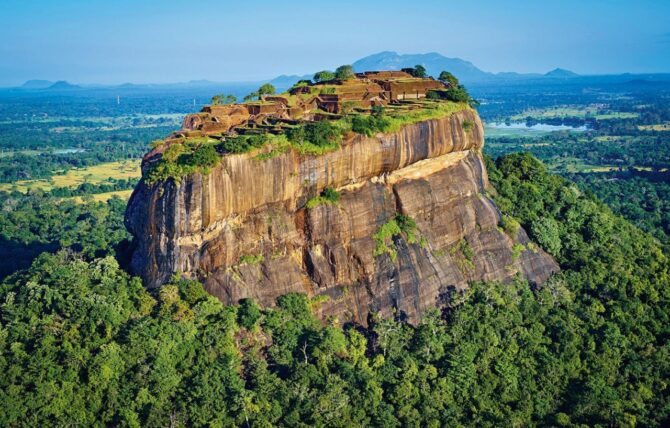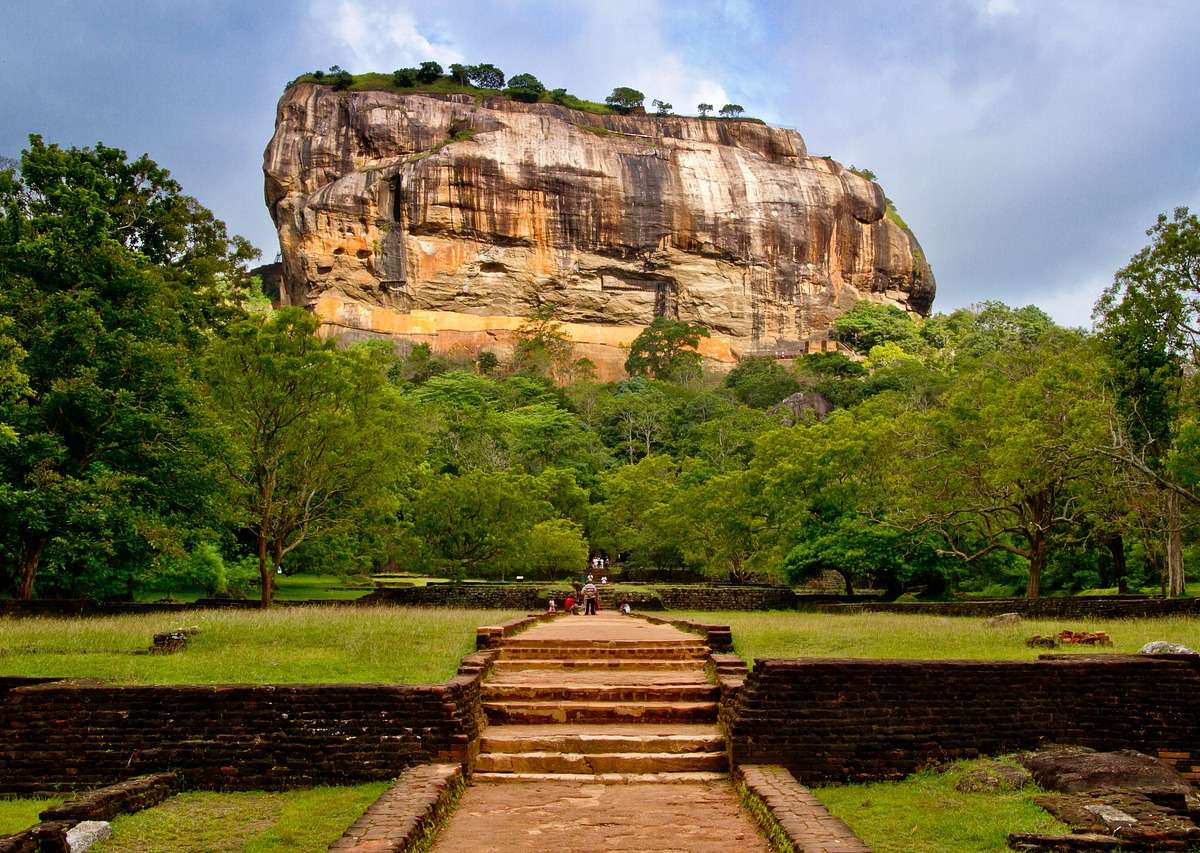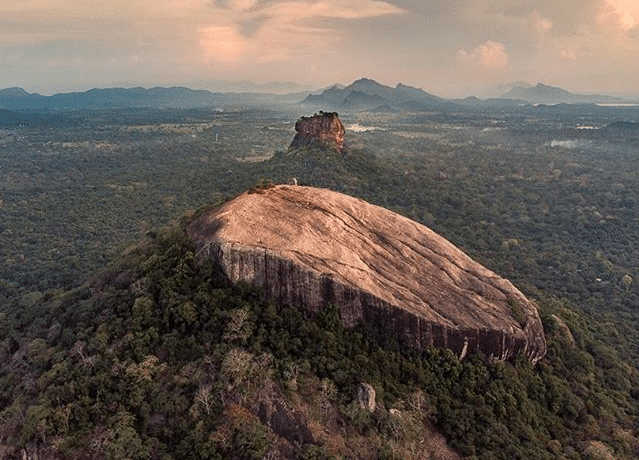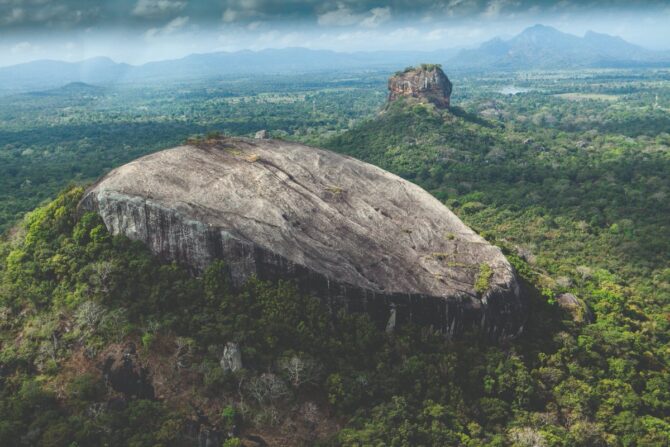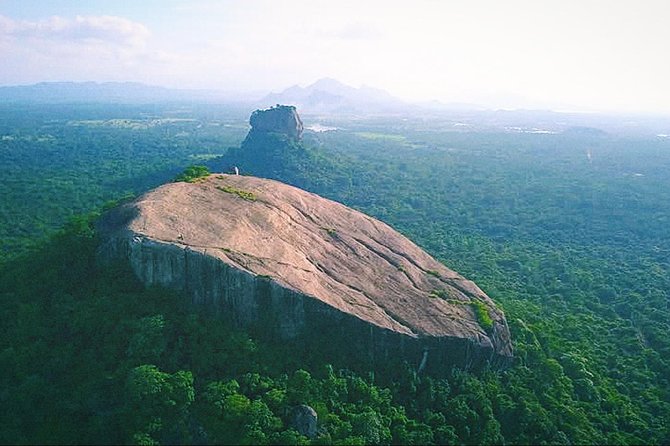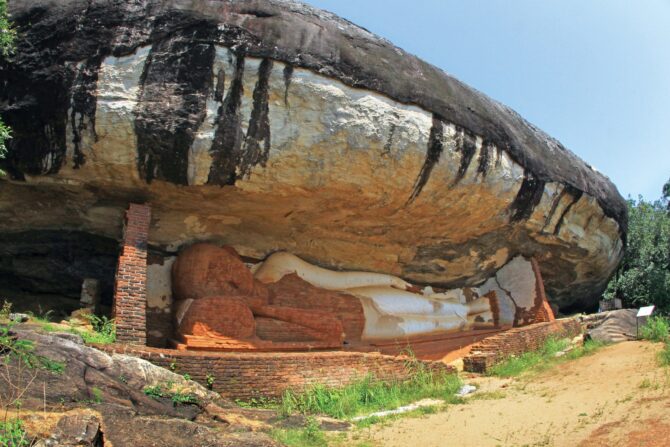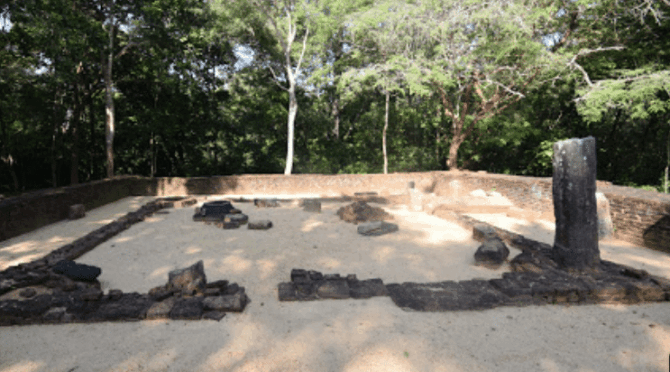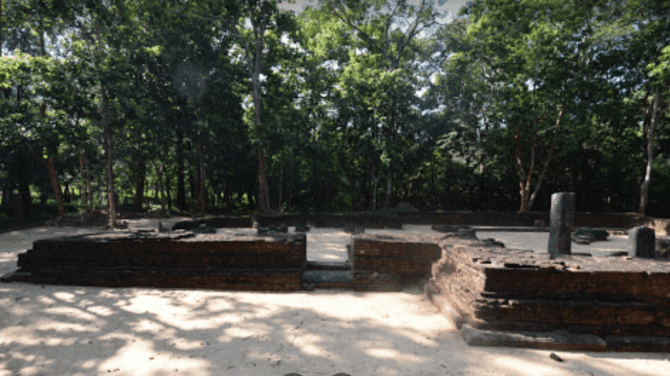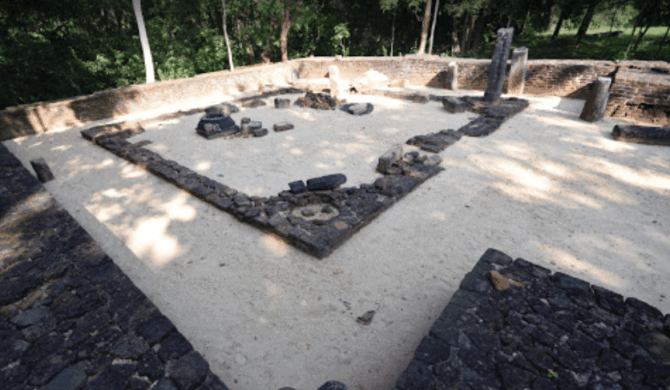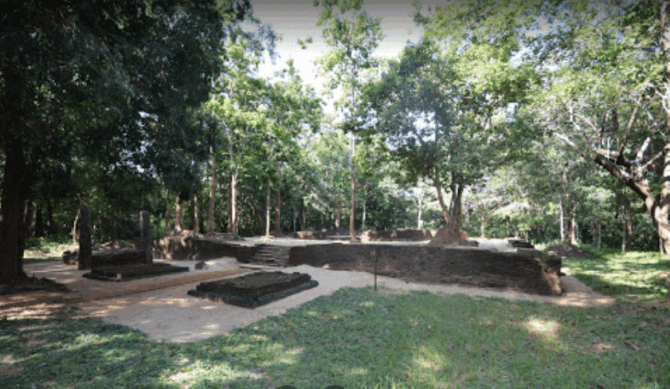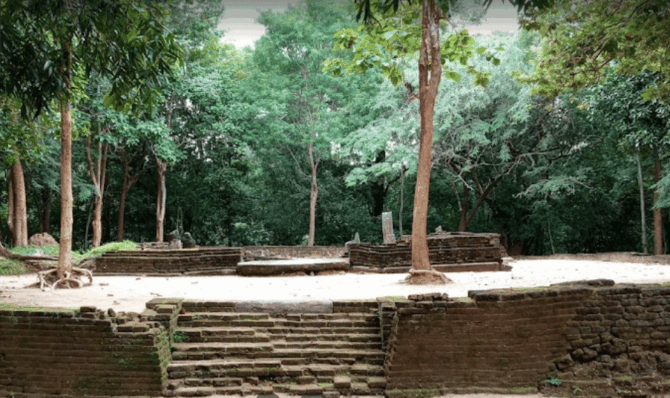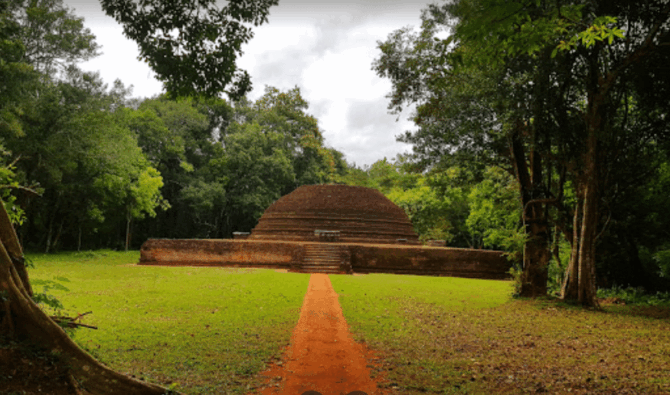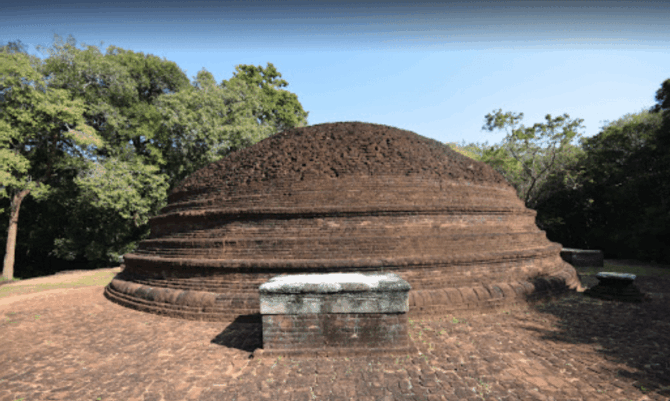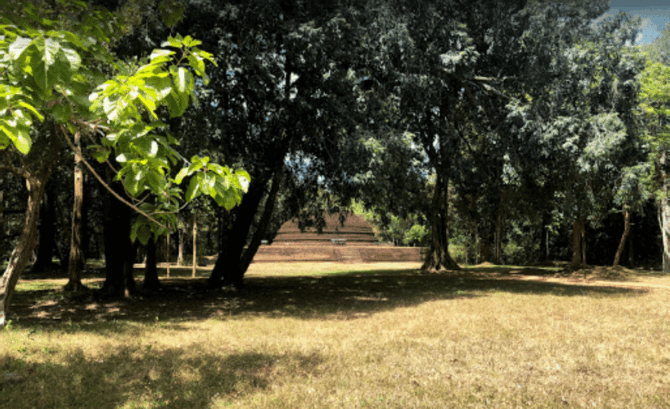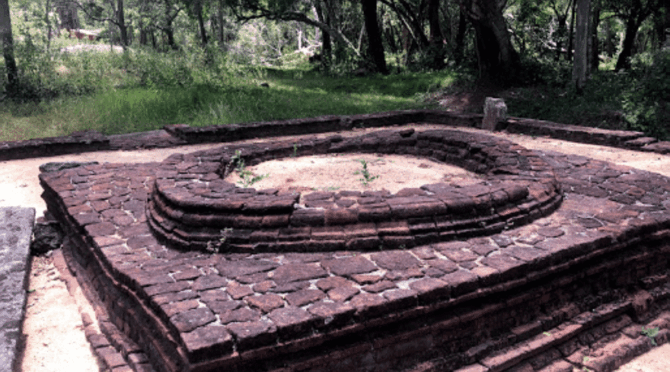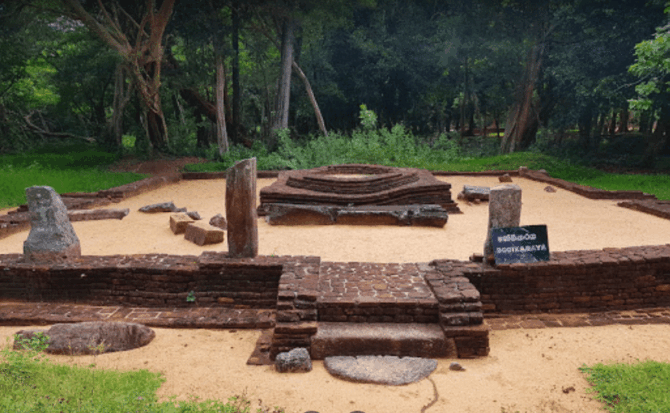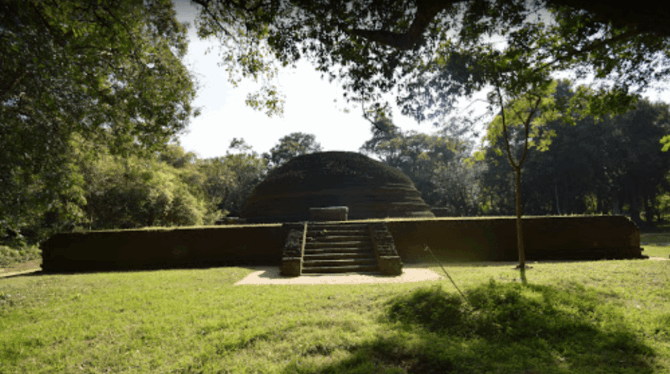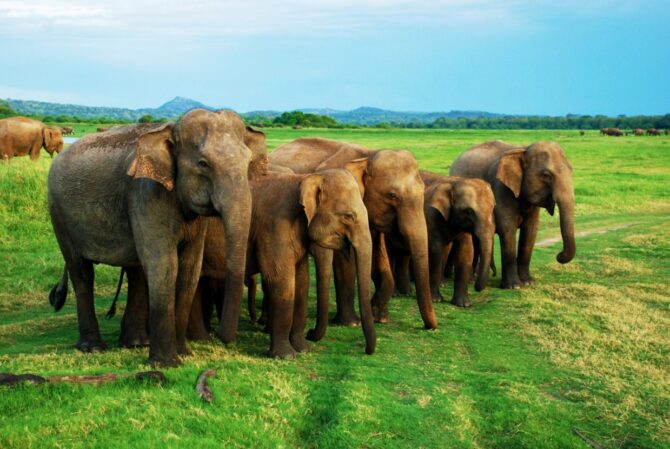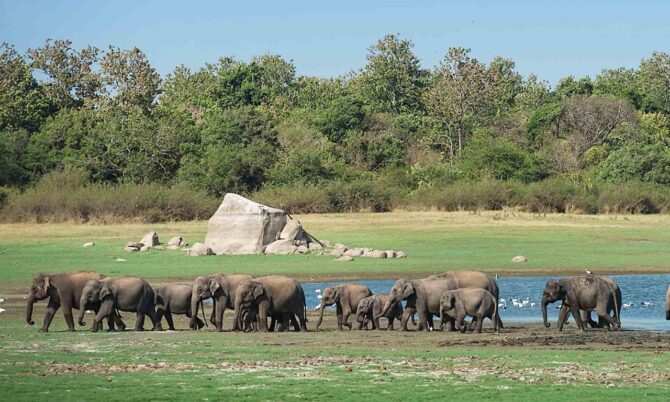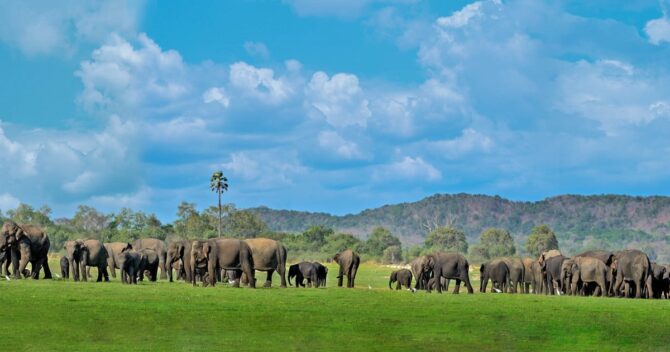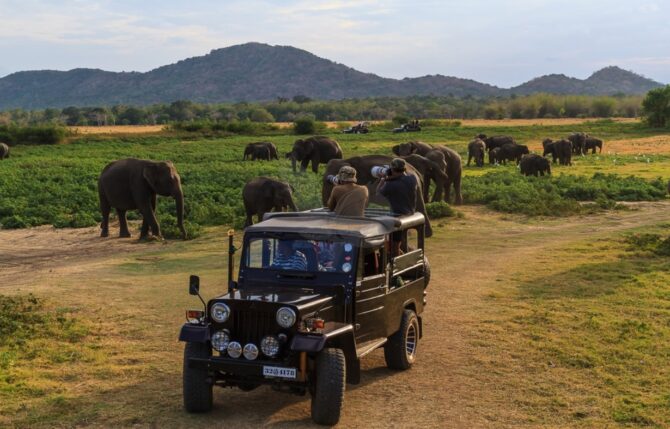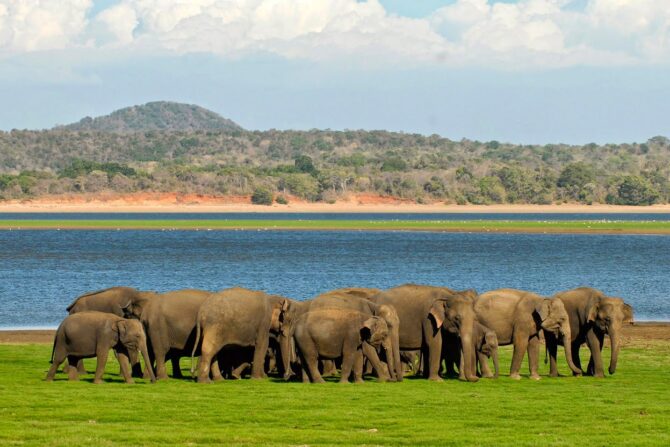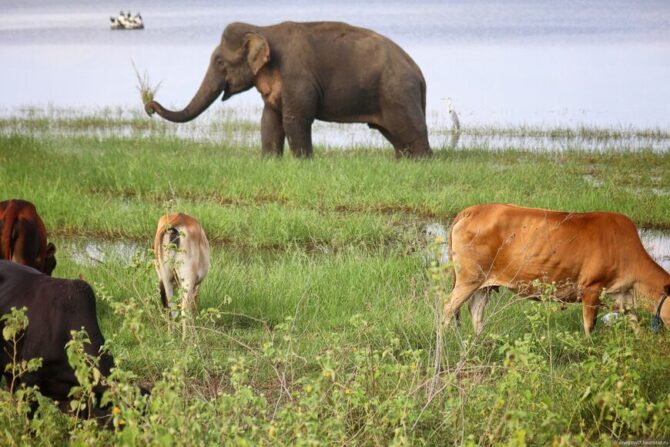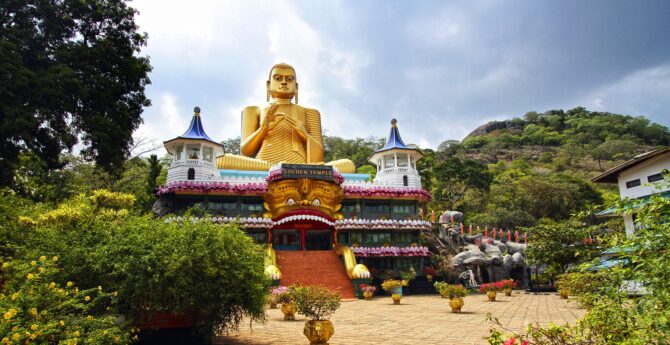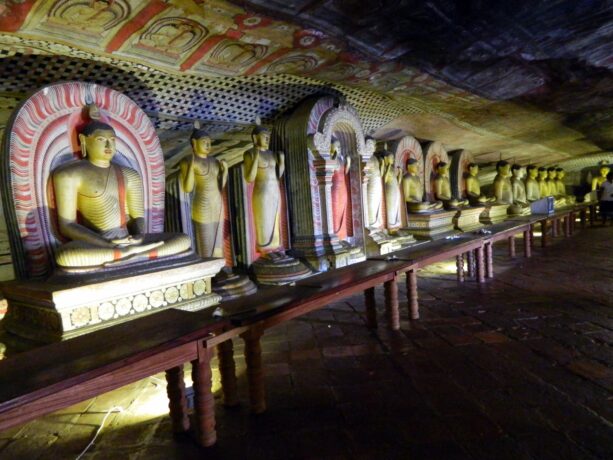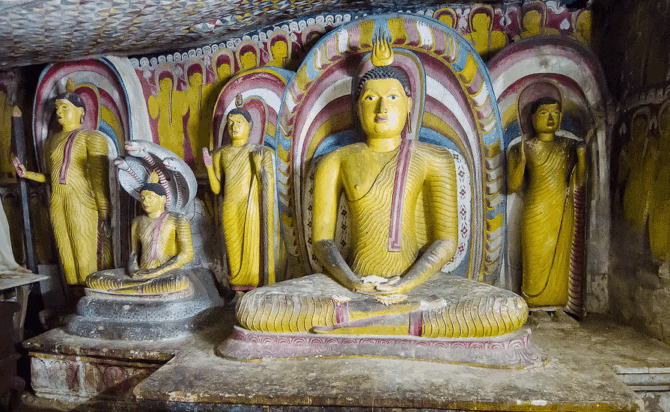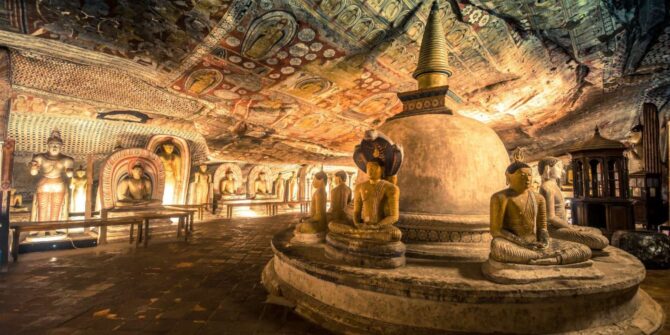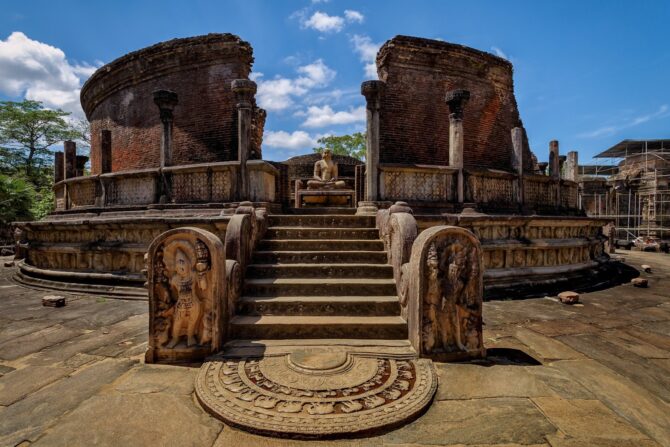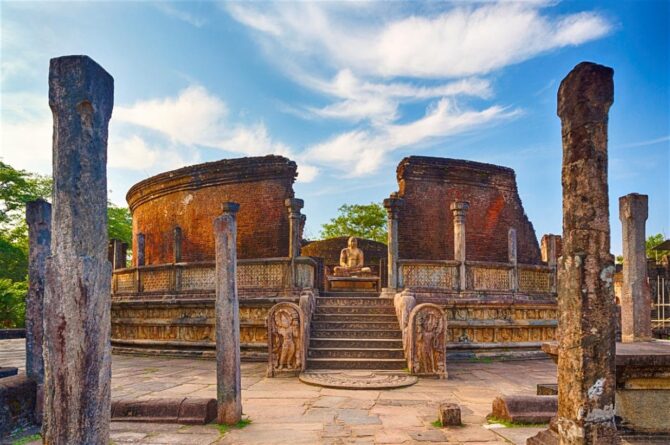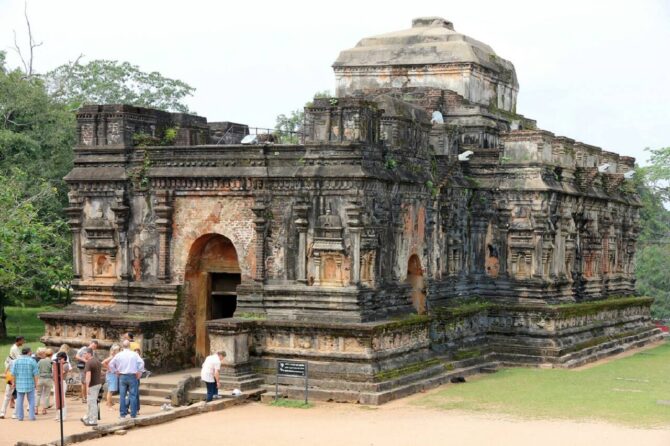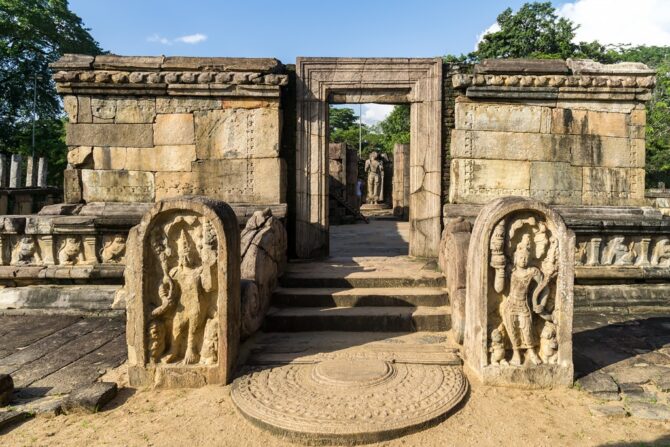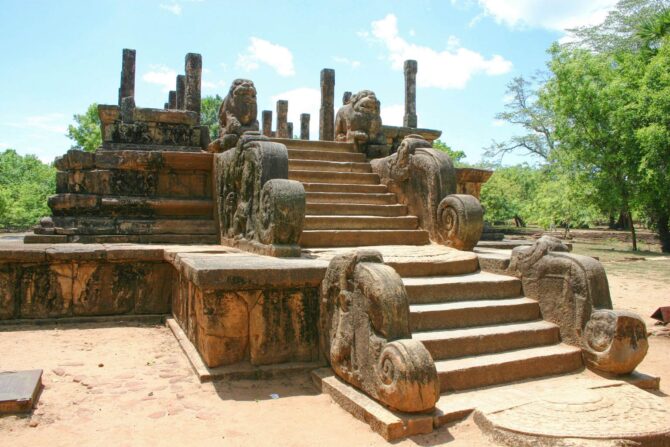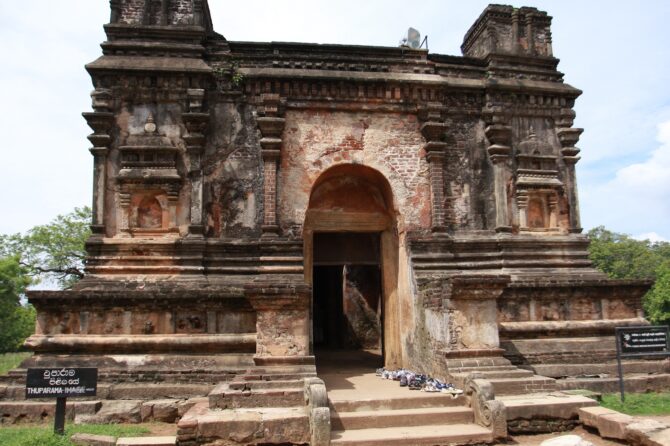Among the numerous historical sites of the island stands out a unique archaeological and natural monument – Sigiriya. The name, well known to foreign tourists coming to Sri Lanka, can be translated from Sinhala as “Lion Rock”. The height of the plateau, towering over the picturesque plain, is 180 m (above the sea surface – 370 m, according to other sources – 350 m).
Sigiriya: why is the historical object interesting for tourists?
Lion Rock is located in the Central Province of the country. It is important for tourists to know how far (in km) travelers have to overcome to Sigiriya, if you move along the roads from certain objects:
- from the center of Colombo – 175;
- from Damballa – the nearest city – 16.5;
- from Matale – administrative center – 65;
- from Bandaranaik – international airport in the vicinity of Colombo – 147.
Tourists come to Sigiriya to get acquainted with the historical monument erected in 477-495 by Kashyapa – the Sinhalese king. The monarch, fleeing from the persecution of enemies, founded a new capital in this place. Kashyapa became the initiator of the construction of the palace complex on the Lion’s Rock.
Ditches filled with water were dug around the fortress, stone and tropical gardens with numerous artificial fountains were laid out. The entrance to the territory of the fortress was a stone figure of a giant lion. After the reign of Kashyap, Buddhist monks lived on the rock. The monastery existed until the XIV century.
Attractions Sigiriya on map
Archaeological Museum of Sigiriya
Acquaintance with the world-famous historical monument, which has been under the protection of UNESCO since 1982, should begin with a visit to the Archaeological Museum. The first excavations in this area began in 1894 As a result of large-scale work, thousands of artifacts belonging to different historical eras were found. The first exposition of the finds was located in a small building in 1982.
The modern museum, built on the territory of the herbal garden (the Herbal Garden), opened its doors in 2009, the author of the project is the architect Chandana Ellepola. The first director of the institution is Senaka Bandaranaike. In a small museum, which is a modern two-story building, a few artifacts and their copies are collected, telling about the history of Sigiriya. The exhibits, housed in six halls, cover a variety of eras:
- prehistoric period; finds obtained as a result of many years of excavations;
- III–I centuries BC. e. – the time of existence of the first Buddhist monastery;
- The Golden Age is the period of the kingdom created by Kashyapa;
- poems and poems composed by visitors to Sigiriya in the VI-IX centuries;
- coins and ceramics of different eras;
- modern history of Sigiriya in documents and photographs.
One of the most interesting exhibits of the museum for tourists is the model of Sigiriya of the period of the “Golden Age”. Most of the objects presented in the halls are exact copies of products and works of art. The doors of the museum are open to visitors daily from 8 am to 5 pm. You can come here in any weather. The ticket price is 1015 rupees (5 dollars). A visit to the museum should be combined with climbing the Lion Rock.
If desired, tourists can get acquainted with the exhibits with the help of a professional guide. Sometimes a popular science film about the excavations and history of the Lion Rock is shown to the guests. On the territory of the museum there is an open theater. Dance and theatrical performances are regularly arranged on the stage. The plot tells about historical events related to Sigiriya.
Ample free parking is available next to the museum. The Talcotta Road leads directly to this place, departing from the Sigiriya Road.
Address: Thalkotta Rd, Sigiriya.
Website: https://ccf.gov.lk/index.php?option=com_content&view=article&id=14&Itemid=139&lang=en
Lion Rock
Thanks to many years of archaeological excavations, scientists were able to find that the first people appeared in the place where Sigiriya is located, in the III century BC. e. These were Buddhist monks who set up dwellings in local caves. Archaeologists have found the remains of objects dating back to that distant historical period. Several generations of monks lived in this place until the end of the I century.
Kashyapa, who seized the royal throne as a result of a coup, settled in Sigiriya in 477, when the construction of a palace complex and a powerful fortress began. Most of the buildings were erected on the flat top of the Lion’s Rock. Fortifications were also built on the slopes and in the valley surrounding Sigiriya. The period of Kashyap’s reign ended in 495, when the troops left the monarch. His brother Moggalana seized the throne. Kashyapa committed suicide.
The capital was moved by Moggalan to its former place – in the city of Anuradhapura. Buddhist monks again settled in Sigiriya. In the XIV century, the monastery ceased to exist, and the Lion’s Rock was forgotten for a long time. At the end of the XIX century, Harry Bell , the British commissioner – organized the first excavations in the Sigiriya area. In 1907, John Still, an English archaeologist, described a gallery of rock frescoes preserved in Sigiriya.
Large-scale excavations have been conducted in the area of lion’s rock since 1982 Now, in [y], numerous visitors coming here from around the world see the remains of fortifications and artificial natural objects created during the reign of Kashyap:
- hall of audiences – the foundation of a spacious room that was part of the palace complex, built on the Lion’s Rock; in the past, tall wooden columns supporting the sloping roof stood in this place;
- mirror wall – a polished surface of the rock, on which for the period from the VI to the IX century more than 1.5 thousand inscriptions of visitors were left: lyrical poems, poems, statements on various topics;
- a gallery of frescoes of concubines; most of the unique images are lost; the surviving frescoes testify to the developed technique of painting: color shades, the use of volume in the depiction of figures of women, clear lines; the length of the canvas is about 140 m; height – 40 m;
- water park, which includes gardens, canals, ponds, lakes, islands, pavilions, tanks, moats, swimming pools; from November to January, lilies bloom on the surface of one of the reservoirs;
- the cobra hood cave, inside of which there is also a small gallery of frescoes;
- stone and terraced gardens; at Kashyap, boulders were used to repel the onslaught of enemy troops;
- the remains of powerful fortress walls, cisterns filled with water, and cave passages;
- an observation deck located on the surface of lion’s rock; from here, tourists take a long look at the adjacent gardens and the surrounding valley;
- lion’s paws – the preserved part of the giant gate through which it was possible to pass to the top of the rock; some archaeologists and historians doubt the existence of this structure in the past.
Access to the territory of the historical monument is open daily from 7 am to 7 pm. The ticket office opens at 6:30 and is open until 18:00. Experienced travelers recommend visiting Sigiriya before noon or in the afternoon in any summer month.
The ticket price along with a visit to the museum is 6,090 rupees ($30) for adults and 3,045 rupees ($15) for children. A safe multi-step staircase with railings leads to the Lion Rock.
Address: Thalkotta Road, Sigiriya.
Website: https://slsigiriya.com/
Mount Pidurangala
About 800 m north of Sigiriya rises the “Golden Rock Donated”. So you can translate the name Pidurangala. The height of the rock above the surface of the sea is 170 m. According to archaeological excavations, the first settlement of Buddhist monks appeared here, as in Sigiriya, in the III century BC. e.
Pidurangala is also associated with the name of Kashyap, who chose the mountain for prayers and religious rituals. According to legend, the first temple on the rock was built on the initiative of the monarch. Now before the visitors of the historical place, less known than Sigiriya, several buildings appear:
- cells of monks;
- the remains of a dagoba, a Buddhist stupa;
- monastery complex, restored in the XIX century;
- a cave temple with rock frescoes, built in the time of Kashyap;
- a statue of a reclining Buddha made of brick; the original sculpture was installed here in the tenth century; in 1967, the statue (length – 12.5 m) was looted by vandals; now a restored buddha figure appears before visitors.
To climb to the top, visitors need to overcome a considerable distance first along a multi-stage staircase, then along a steep path passing between boulders. The flat top of the rock has a triangular shape and a slight slope. From here, Sigiriya is clearly visible. Tourists enjoy watching the colorful sunsets and sunrises.
Access to the rock is open from 8:30 to 17:30. The ticket price is 500 rupees (3.5 dollars). Tourists come to the rock every day in the morning and evening hours. Especially many travelers gather in this place in the summer and in September. From Lion Rock to Pidurangal can be reached by tuk-tuk or on foot along a picturesque road passing through the dense jungle.
Address: Inamaluwa–Sigiriya road, Sigiriya.
Ruines of the Old Image House of Pidurangala
The ruins of the house of ancient images of Pidurangala are part of the temple complex, erected in the X century and consisting of five separate sacred buildings. Inside the room there were massive stone columns. The outer wall was decorated with images on Buddhist themes.
Now the remains of the foundation of the religious building appear before the visitors. Here you can stop for a few minutes to take pictures and imagine how majestic the hall looked in the distant past. Travelers come to this place to relax in the shade of tall tropical trees.
Tourists can visit and explore the remains of the ancient building while exploring the temple complex. The structure is located on the northwest side of the cave temple.
Pidurangala Old Dageba
Next to the Old Image House is a stone stupa. The sacred object is located on a platform lined with cobblestones and towering over the surrounding area. Pidurangala Old Dageba is accessed by a stone staircase consisting of 10 steps. You can explore the historical and sacred object while exploring other interesting structures located on Pidurangala and around the rock.
Minneria National Park
Sigiriya and the surrounding area is not only a historical monument, but also a region rich in natural objects. To the northeast of Lion Rock are the “possessions” of Minneria, a major national park. The protected area, which occupies an area of 8.89 thousand hectares, was founded in 1997, now it is a large national park where a variety of representatives of the animal world live:
- birds – 160 species;
- butterflies – 75;
- fish – 26;
- amphibians – 9;
- mammals – 24;
- reptiles – 25 species.
Minneria is known as a place where a large number of Asian elephants accumulate during the dry period – in July-September. The number of individuals can range from 350 to 700. Elephants gather at a watering hole on the shores of the picturesque Lake Minneria. Local meadows are rich in lush grasses. In addition to elephants, the national park is inhabited by other rare animals and birds:
- leopards;
- bush chickens;
- iguanas;
- lory;
- hornbills;
- sponge bears;
- white pelicans;
- deer;
- grey herons;
- buffaloes;
- peacocks;
- red-faced gulmans;
- Owls.
Jeep safaris will start in the city of Habarana. The organizers of the trip are professional drivers who know the route and the peculiarities of the terrain. The duration of the jeep safari is from 3 hours. Kick-off is at 6:30 and 15:00 (or 13:00). The cost is 95 dollars. Individual safari for two tourists – 150 dollars. Travelers can also book safaris at the entrance to the national park. The price includes the ticket price and the services of a guide-driver.
Tourists usually get to Habaran. Motorists travel from Sigiriya on the roads – Sigiriya Road and Moragas–Ilukweva Road – to Weeva Road. Then you should make a turn to the right and continue to the park or – to the left and go to Habaran. The distance from Sigiriya to the entrance to the national park is 17.4 km, to Habaran is 13.5 km.
The most suitable time to visit Minnery is September and the summer months.
Website: https://minneriyasafari.com/
Park office address: No. 888/23, Kaduruwela, Polonnaruwa, Sri-Lanka.
Dambulla Cave Temple
One of the most interesting sacred sites of Sri Lanka is located 19 km southwest of Sigiriya. In the city of Dambulla there is a famous cave temple, erected in the I century BC. e. on the initiative of Valagambus, the Sri Lankan king, who escaped in the rocks from the persecution of enemies. Over the following centuries, other monarchs continued to build a sacred structure.
Now a large cave complex appears before visitors and numerous pilgrims. The Buddhist temple is located at a considerable height – 350 m. The complex includes five caves of different sizes:
- Devana Alut Viharaya – originally used as a warehouse; now it houses statues of Vishnu and Kataragama, as well as 11 sculptures of the Buddha;
- Pachchima Viharaya, where the ancient stupa is kept;
- Maha Alut Viharaya – there are 56 Buddha statues here; the ceiling is painted with images of the god;
- Maharajalena – a stupa and 11 buddha sculptures are kept in the room;
- Devarajalena – the cave is known for the statue of the reclining Buddha; the length of the sculpture is 14 m; there are also 4 Buddha statues and one Vishnu.
The niches of the cave temple are skillfully painted with images on Buddhist themes. The cost of visiting for one tourist is 10 dollars. Ticket offices are located next to a hill near the gilded Buddha statue. Access to the cave temple complex is open from 7 a.m. to 6 p.m. Tourists and pilgrims climb a long staircase.
The temple complex is located in the city of Dambulla to the east of the Kandy-Jaffna highway. From Sigiriya, motorists travel by inamaluwa–Sigiriya, Ambepussa–Trincomalee and Kandy-road. Tourists come here throughout the year, even in the rainy season.
The address of the temple complex: Dambulla Cave Temple, Kandy–Jaffna Highway, Dambulla.
The ancient city of Polonnaruwa
About 52 km east of Sigiriya is the territory of a unique historical monument. The total area of Polonnaruwa, an ancient city founded by Buddhist monks on the shores of Lake Bendiveva in the III century, is 122 hectares. For a long time, this place was not of great economic and political importance. The heyday of the city began at the beginning of the XII century, when Polonnaruwa became the capital of the state.
The period of rapid economic growth and trade development did not last long. In the XIII century, the city gradually fell into desolation and was abandoned by the inhabitants. Large-scale excavations began only in the middle of the last century. Now the remains of differently preserved ancient structures appear before visitors:
- royal baths;
- the monastery library, where sacred books are collected;
- Tivanka – a sacred building, where a bent buddha statue and several ancient frescoes depicting dwarfs, lions and giants have been preserved;
- a stone pond, made in the form of a lotus with eight petals;
- Gal Viharaya is a well-preserved temple in the rock; here you can see four statues of the Buddha, including a standing figure of the deity (height – 7 m) and lying (length – 14 m);
- Lankatilaka – remains of a vaulted Buddhist temple; height of the surviving walls – 17 m; the Buddha statue is missing a head;
- Rancot Weher – round stupa; surface girth – 168 m;
- Pabalu Vehera – a small stupa surrounded by four Buddha statues;
- Gal Potha is a giant stone book with inscriptions carved on the surface by order of King Nissankamalla; height of the historical monument – 0.6 m, length – 8 m; the inscriptions tell of the battles fought by Nissankamalla;
- temples built in honor of the tooth of the Buddha – Atadagh (XI century) and Khatadag (XII century);
- Satamahal Prasad is a seven-tiered step pyramid;
- a pavilion for ritual chants of Buddhists;
- the Royal Reception Hall, where columns and a large moonstone are well preserved;
- Kiri Vehera – a tall stupa of white color with perfect proportions;
- Vatadaghe is a round-shaped temple decorated with a staircase with elegant carvings.
Many of the artifacts found by archaeologists during years of excavation are collected at the local Archaeological Museum or the National Museum in Colombo. The entrance to the territory of the ancient city is open from 7:00 to 18:00. The ticket price is 4500 rupees (25 dollars) for an adult visitor, 2250 rupees (12.5 dollars) for children.
Experienced travelers are advised to rent a bicycle to move around the complex or use the services of a tuk-tuk. The duration of acquaintance with the ancient city is from 4 hours. The best period is summer and September. From Sigiriya, tourists move along the roads: Sigiriya Road, Moragas-Ilukveva and A-11.
Address: Sudarshanarama Puranagama road, Polonaruwa.
Sigiriya – a corner of Sri Lanka rich in historical monuments
The relatively small island surprises foreign tourists with the many opportunities that open up here for lovers of tropical nature and recreation on wide sandy beaches. Sri Lanka is also unusually rich in historical sites, many of which are concentrated in Sigiriya and the immediate vicinity. To visit this corner of the island means to discover ancient monuments, sacred places and cave temples. All this will help tourists to expand their knowledge about Sri Lanka and its diverse culture.


